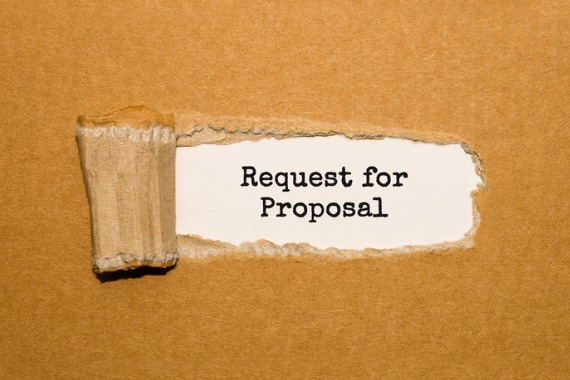While traditional approaches to grant proposal writing rely heavily on anecdotal storytelling, more and more nonprofits are turning to data-driven strategies to stand out from the competition.
Ultimately, nonprofits that embrace data-driven approaches to grant proposal writing are better positioned to stand out from the competition, secure funding, and achieve their mission.
Competing for Limited Funds
Grant funding is a critical source of financial support for nonprofit organizations, providing needed resources to carry out their missions and make a meaningful impact in their communities. But with so many nonprofits competing for limited funding opportunities, it can be challenging for organizations to stand out from the crowd and secure the funding they need.
“There are two things nonprofits can do to differentiate themselves, get more funding, and make a bigger difference,” explained Lynne Henslee, COO of e2btek. “Embrace data and use it strategically.”
Sure, nonprofits have relied on storytelling and anecdotal evidence to make their case. While these approaches are still valuable, more and more nonprofits are turning to data-driven strategies to strengthen their grant proposals and increase their chances of success.
Keep reading to learn some of the surprising ways that nonprofits are using data to stand out and win grants, highlighting innovative approaches that are helping organizations to achieve their mission in the world.
The Rise of Data-Driven Approaches
In recent years, there has been a growing recognition of the importance of data in the nonprofit sector. Nonprofits increasingly turn to data-driven approaches to inform their decision-making processes, measure their impact, and communicate their achievements to stakeholders. This trend has extended to grant proposal writing, with more and more nonprofits using data to strengthen their case for funding.
One of the more critical benefits of data-driven approaches to grant proposal writing is that they can provide objective evidence to support a nonprofit’s claims. That’s because they can make a stronger case for funding than they would be able to with anecdotal evidence alone by using data to demonstrate:
- the need for their programs
- the effectiveness of their interventions
- the impact they have made
This is particularly important given increasing competition for grant funding in many sectors.
Improvement Opportunities Evidence-based
Using data in grant proposals can help nonprofits identify areas for improvement and refine their programs over time. By collecting and analyzing data on program outcomes, nonprofits can identify which interventions are most effective and which may need to be modified or discontinued. This can lead to more efficient use of resources and better outcomes for the communities they serve.
The rise of data-driven approaches to grant proposal writing reflects a broader trend in the nonprofit sector toward evidence-based decision-making. By using data to inform their strategies, nonprofits are better positioned to impact the world positively.
Surprising Ways Nonprofits are Using Data
Nonprofits are finding increasingly innovative ways to use data to support their grant proposals.
Here are just a few examples:
- Geographic information systems (GIS): Using GIS software to map community needs and identify areas where their programs can have the most significant impact is an exciting application by nonprofits. For example, a food bank might use GIS to identify areas with high rates of food insecurity and target their services accordingly.
- Social media analysis: Nonprofits analyze social media data to identify trends and audience interests. This can help them to tailor their messaging and outreach efforts to better connect with potential donors and partners. A nonprofit that works on environmental issues, for example, might use social media analysis to identify the most popular hashtags and keywords related to their cause.
- Machine learning algorithms: Machine learning algorithms analyze program outcomes and identify areas for improvement. A nonprofit that provides job training services might use machine learning algorithms to determine which training programs are most effective at helping participants find employment.
These are just a few examples, but nonprofits have quite a few innovative ways data can support their grant proposals and make a stronger case for funding.
Using Data to Demonstrate Impact
One less surprising but effective way for nonprofits to secure grants is to demonstrate the impact of their work. Funders want to see tangible evidence that their support is making a difference in the world. To do this, nonprofit orgs are increasingly turning to data to measure and analyze the impact of their programs and services.
For example, a nonprofit that provides education and training programs for underprivileged youth might track metrics such as graduation rates, employment rates, and income levels of program participants. By analyzing this data, the nonprofit can demonstrate the effectiveness of its programs and make a compelling case to funders.
By using data to demonstrate impact, nonprofits can make a compelling case to funders and differentiate themselves from other organizations to secure the resources they need to make a difference.
Using Data to Identify Potential Donors
Organizations that use data to identify potential donors can tailor their fundraising efforts to specific audiences. Simply by analyzing data on donor demographics, giving history, and behavior, nonprofits can identify potential supporters and customize their outreach and engagement strategies.
Data can also help identify potential donors through predictive modeling. By analyzing donor behavior and engagement data, nonprofits can predict which individuals are most likely to donate and target their outreach efforts accordingly.
The Data Evolution
As the nonprofit sector continues to evolve, data will likely play an even greater role in shaping the way organizations operate, engage with stakeholders, and pursue their mission.
At the top of the priority list, data is becoming the most essential tool for nonprofit organizations seeking to stand out and win grants. By using data in creative ways to demonstrate impact, improve operations, and identify potential donors, nonprofits can differentiate themselves from other organizations, make a compelling case to funders, and ultimately have a more significant impact on the communities they serve.



